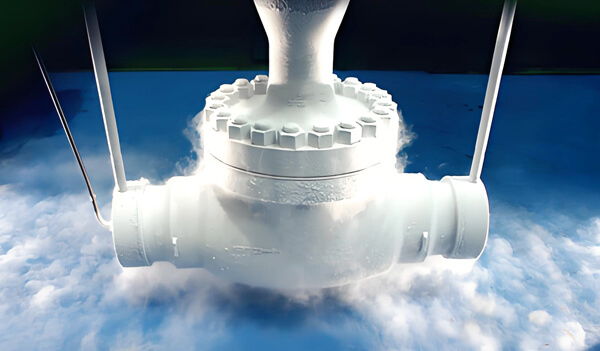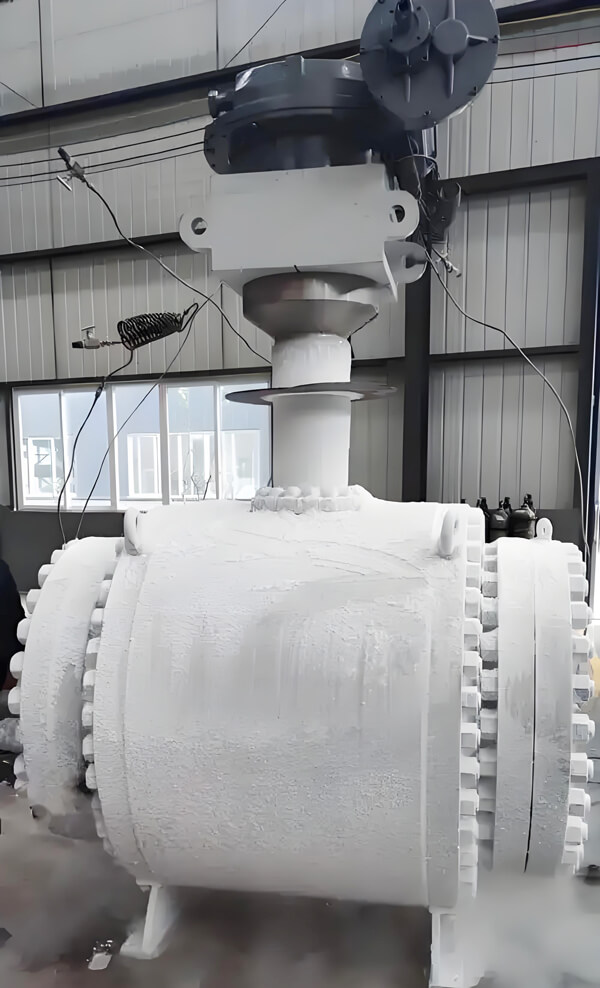What is a Cryogenic Valve
A cryogenic valve is a specialized industrial valve designed to operate in extremely low-temperature environments, typically below -40°C (-40°F) and as low as -196°C (-321°F). These valves are critical for handling liquefied gases like LNG (liquefied natural gas), liquid nitrogen, oxygen, argon, and helium, ensuring safe flow control and preventing leaks in cryogenic systems.

—
Types of Cryogenic Valves
1. Cryogenic Ball Valve: Features a rotating ball with a bore to control flow. Ideal for quick shut-off and minimal pressure drop.
2. Cryogenic Butterfly Valve: Uses a disc rotated by a stem for throttling or isolation. Compact and lightweight, suitable for large pipelines.
3. Cryogenic Gate Valve: Employs a gate-like disc for linear motion control. Perfect for full open/close applications with low resistance.
4. Cryogenic Globe Valve: Designed with a spherical body and movable plug for precise flow regulation in cryogenic systems.
—
Temperature Classifications of Cryogenic Valves
Cryogenic valves are categorized based on operating temperatures:
- Low-Temperature Valves: -40°C to -100°C (e.g., liquid CO₂).
- Ultra-Low Temperature Valves: -100°C to -196°C (e.g., LNG, liquid nitrogen).
- Extreme Cryogenic Valves: Below -196°C (e.g., liquid helium).
The -196°C cryogenic valve is among the most demanding, requiring advanced materials and design.
—
Material Selection for Cryogenic Valves
- Body & Trim: Stainless steel (SS316, SS304L) for corrosion resistance and toughness.
- Seats & Seals: PTFE, graphite, or elastomers rated for low-temperature flexibility.
- Extended Bonnet: Prevents heat transfer to the stem packing, critical for -196°C cryogenic valve performance.
—
Cryogenic Valves vs. Standard & High-Temperature Valves
- Design: Cryogenic valves have extended stems/bonnets to isolate seals from cold fluids.
- Materials: Standard valves use carbon steel, unsuitable for cryogenic brittleness.
- Sealing: Cryogenic versions use low-temperature-rated seals to prevent leakage.
- Testing: Cryogenic valves undergo deep-freeze tests to validate performance.
—
Advantages of Cryogenic Valves
- Leakproof Performance: Zero emissions in extreme cold.
- Durability: Resistant to thermal shock and material embrittlement.
- Safety: Built to handle rapid temperature fluctuations.
- Low Maintenance: Robust construction reduces downtime.
—
Applications of Cryogenic Valves
- Energy: LNG storage, transportation, and regasification.
- Healthcare: Medical gas systems (liquid oxygen, nitrogen).
- Aerospace: Rocket fuel handling.
- Industrial Gases: Production and distribution of liquid argon, helium.
—
Cryogenic Valve Manufacturer – NSW
NSW, a leading cryogenic valve factory and supplier, delivers high-performance valves for critical industries. Key strengths:
- Certified Quality: ISO 9001, API 6D, and CE compliant.
- Custom Solutions: Tailored designs for -196°C cryogenic valve applications.
- Global Reach: Trusted by LNG plants, chemical facilities, and aerospace giants.
- Innovation: Patented seat materials and stem designs for extended service life.
Explore NSW’s range of cryogenic ball valves, butterfly valves, and gate valves engineered for reliability in the harshest conditions.

—
Why Choose NSW as Your Cryogenic Valve Supplier
- 20+ years of cryogenic expertise.
- Full pressure and temperature testing.
- Fast lead times and 24/7 technical support.
Post time: May-18-2025






